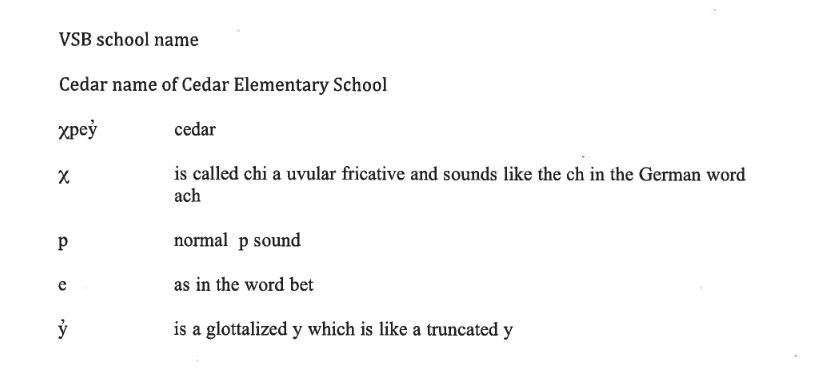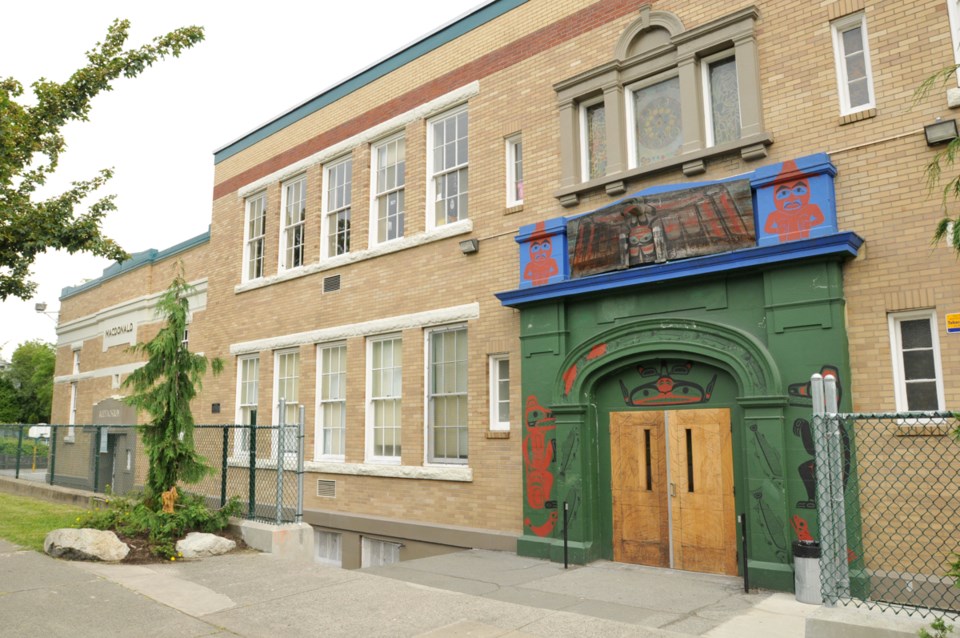An East Van elementary school is on the cusp of a name change that will better reflect its Indigenous student population and curriculum.
Located at 1950 East Hastings at Victoria Drive, Sir William Macdonald elementary will likely be known as Xpey’ elementary. Vancouver School Board official trustee Dianne Turner will make that call Monday, Oct. 23, in what will be her last meeting at the helm of the district before successful byelection candidates are sworn in on Oct. 30.
Xpey’ translates to “cedar” in the henqeminem dialect spoken by members of the Musqueam nation.
The original school, which began in temporary buildings at Victoria and Pender streets, was named Cedar Cove elementary because of its proximity to Burrard Inlet.
Macdonald elementary opened in 1906 and was named after Sir William Macdonald, a tobacco merchant and educational philanthropist.
The school became an Aboriginal focus school in 2012.
The current name-change exercise is two years in the making and was initiated in late October 2015. A re-naming committee was struck consisting of the school’s principal, VSB staff and representatives from the student and parent population.
School board policy states that re-naming a school must reflect the educational needs of the students and the history and cultural tradition of the school and community. The new name aligns with the proposed change from a local catchment to a district catchment for this Aboriginal focus school.
More than 30 names were submitted over a week-long process by 45 people. Cedar Cove received the most votes among committee members. After some discussion, the consensus was that the school should be named with the Musqueam word for Cedar Cove or Cedar.
District staff then asked Chief Wayne Sparrow and council members of the Musqueam lndian Band for their help translating the term, and a translation and phonic equivalency were returned to the board earlier this month.

Should Turner endorse the name change Monday, the school will adopt its new moniker “shortly thereafter,” according to a VSB communications staffer.
Meanwhile, earlier this month, the Vancouver Park Board approved a motion to consult with the Squamish, Musqueam and Tseil-Waututh First Nations about changing the name of Stanley Park’s Siwash Rock because the word Siwash, whose origins can be traced back to the French word “sauvage,” is considered offensive.
Park board staff were directed to consult with the Stanley Park Intergovernmental Group, which includes representatives from the three First Nations, to determine if there’s a desire to rename the landmark. Staff will be reporting back to the park board on a potential process and time frame for renaming.
The first major civic building to have an Aboriginal name is the new library in Strathcona, which opened in April 2017.
It was named nə́c̓aʔmat ct, which reflects the idea of “we are one” in the Musqueam language. It was inspired by the community suggestion “Namwayut” — the theme of the City of Vancouver’s Year of Reconciliation activities.
@JohnKurucz
Note: This story has been changed since first posted.



